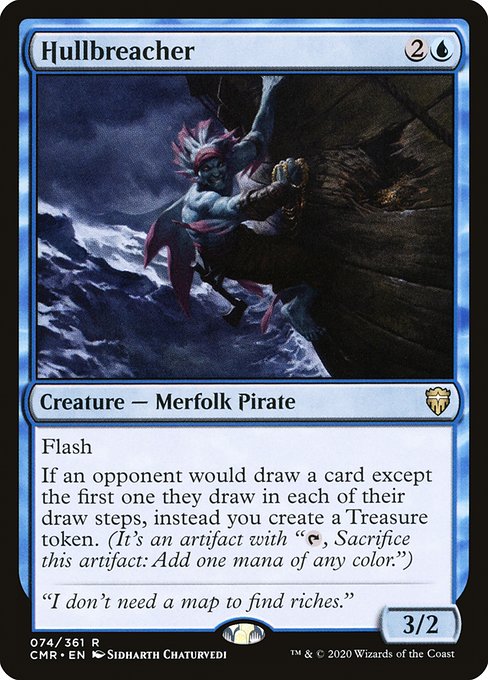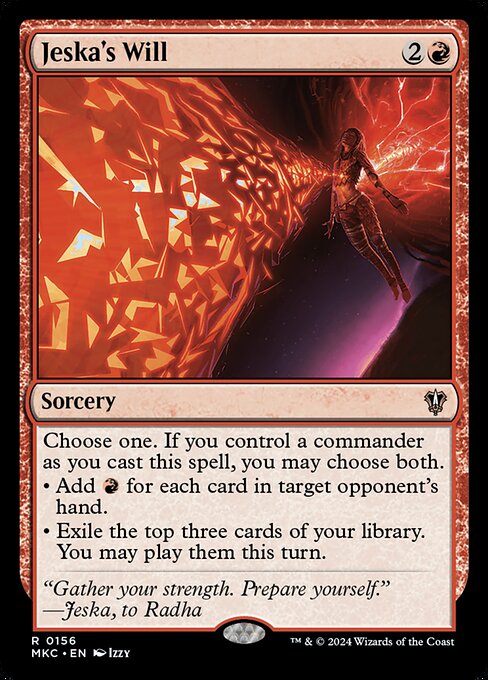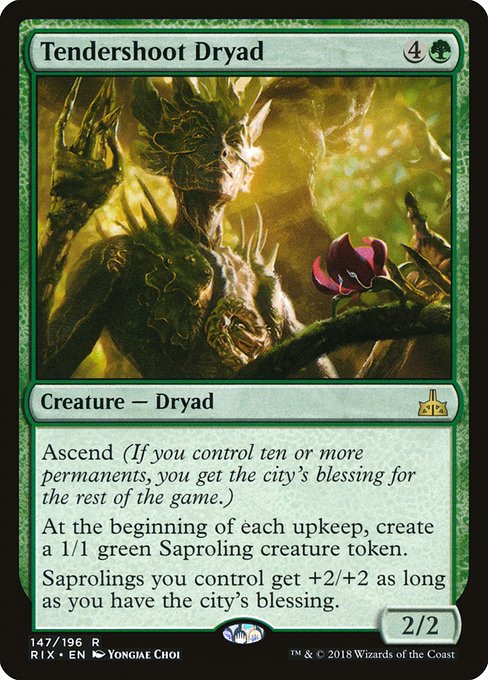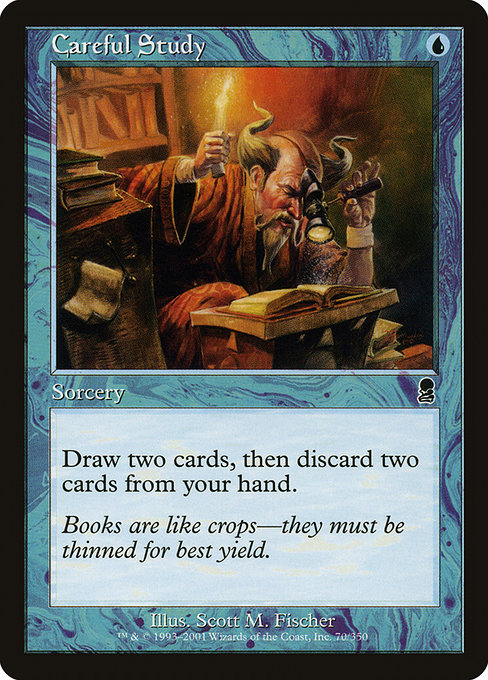It is pretty easy to find cards that all of us missed from one set or another. It can feel bad to watch a card skyrocket in price after you impatiently traded yours away during the prerelease. It’s also pretty cool to immediately know which cards you should be trying to get once a set releases. One thing I’ve been consistently good at is sometimes recognizing when cards are undervalued or straight-up overlooked entirely. Today, I would like to share some of the methods and heuristics I use to reach these conclusions. Welcome back to the Commander Corner.
Before we jump in, I’d like to offer a disclaimer. This isn’t an article about Magic finance. I know any time I bring up the price of cards there’s someone in the audience who got in early and cashed out big, and someone else who sold early and now has to pay $70 if they want to put Sheoldred, the Apocalypse in their deck.
If you sincerely believe a card is going to spike in price, more power to you, and good luck. I can’t police how you use this information, I can only tell you what I do with it. I use this information to pick up and/or hold onto singles I don’t want to have to purchase at a higher price further down the line. Additionally, while the title says “staple”, you can certainly identify generally popular Commander cards with these heuristics as well. With that out of the way, let’s get right into it.

The Obvious Ones
I’m not gonna straight up describe Magic game theory to you. We all probably understand the concept of card advantage, and you probably know enough to see how a card trading one resource for another is great as long as the rate is reasonable. Mana efficiency, ‘strictly-better-than’, says ‘each opponent’;e these are all easy to spot. We have to go deeper than this, and we will.

Look Out For Strong Cards That Don’t “Fit” Anywhere (Yet)
We’ll have to Time Warp back a few years, but bear with me on this one. The year is 2015, and the release of Dragons of Tarkir saw the initial printing of Kolaghan’s Command and Collected Company. Further back, in 2013, during the release of Theros, I saw the card Gitaxian Probe for the first time. I similarly described Faithless Looting during the Probe discussion as an obviously powerful card.
For some reason people didn’t believe me about most of these cards, and many brought up that they lacked a really good deck to see play in, but they all spiked rather dramatically months or years after my saying so. Gitaxian Probe in particular went on to become restricted in Vintage and banned in every format beyond Commander. It might seem obvious in hindsight, but the card is pretty good.
I didn’t exactly break new ground in any of the formats those cards saw play in. I’ve rarely been a 60-card constructed deckbuilder, but I at least saw the potential for brokenness. The raw power level is there, but the cards didn’t have a home. As soon as there was a home, the cards jumped way up in price, and that’s the origin of my first heuristic: If it’s strong, but doesn’t have a home, hold onto it, or the before its time heuristic. There will only ever be more cards and thus more opportunities for the card to find a home.

Look Out For Strong Cards With Proper Nouns Alongside Card Type Combos And IP-Crossover Exclusives
While this isn’t a hard and fast rule, it is usually easier for WotC to reprint cards, in Standard sets, which don’t have proper nouns in the card name. There are outliers, like Dockside Extortionist having only one reprint despite absurdly high demand, but generally this holds true. Most of the time, WotC doesn’t reprint legendary creatures in Standard sets.
After all, it’s easier to find a place to print a card like Abrupt Decay or Swan Song than it is to reprint a card called ‘Emperor Porgle of the Rather Unique Plane XYZ’ or perhaps ‘Gimignananogish, the Oddly Specific Plot of Land on Plane XYZ’, especially if poor Emperor Porgle didn’t survive in his last set and the Gimignananogish Forest was burned down.
Similarly, a lot of cards don’t perfectly fit the design space of Standard sets, or even premium and supplemental ones like Modern Masters. Particularly cards with multiple card types. The Theros block gods are a fantastic example, with Purphoros, God of the Forge in particular having never seen a meaningful reprint and maintaining consistent relevancy in the Commander format.
Finally, if the card is from a crossover event and has one of the above features, you can almost be sure it’s not going to see a meaningful reprint. That’s a combo of reasons a card might be difficult to reprint, if not nearly impossible within a Standard set. The proper noun heuristic is simple: Watch out for strong cards which are difficult to reprint.
I learned this lesson the hard way when I sold Jace, Vryn’s Prodigy for about $10 a few weeks before it spiked to well over $100, and I realized it fit pretty well in my Oloro, Ageless Ascetic reanimator deck. As a named character on a double-faced card, I probably should have known better than to sell my only copy so hastily, but such is life.

Look Out For Strong Cards That Care About Card/Creature Types (Especially Legendary Creatures)
This gets more into the gritty details of what makes cards very popular in Commander. Right now Kaalia of the Vast remains one of the most popular Commanders ever printed, and it’s easy to see why. What are they gonna do, stop printing Angels, Demons, and Dragons? Of course not!
Since they’re only ever going to print more cards with those creature types, any card which gets better as more are printed is automatically worth considering. This heuristic was inspired by the ban of Birthing Pod in Modern, as Pod was banned for the same reason: It would only ever get better because they were never going to stop printing creatures, and invariably some of them would eventually be really good with Pod.
The more open-ended the design space, the better. We can reasonably expect that a card which makes artifact decks better will get better as more artifacts are printed, which satisfies the heuristic just fine. Subtypes, including creature types, have to be considered much more carefully. Be’lakor, the Dark Master cares about the creature type Demon, and I can guarantee they’re not gonna stop printing those. Go-Shintai of Life’s Origin cares about the Shrine subtype, which is much more difficult to expand.

Consider the new Tom Bombadil. This merry fellow really wants you to play more Sagas. Lucky for us, there’s some pretty powerful sagas already. But wait, that’s a pretty heavily supported subtype as well! The heuristic, watch for cards that care about card/creature types (especially Legends), or the card/creature type heuristic, applies here. As a bonus, Tom satisfies the proper noun heuristic as well on multiple fronts.

Look Out For Cards That Make Or Do Lots Of Things
A lot of people missed that Fable of the Mirror-Breaker kind of does everything. This card went from costing a pair of quarters to costing a full $20 bill very quickly, and to be honest, it’s a big part of the inspiration of this heuristic: Watch for cards that create lots of things, or the multiple effects/objects heuristic.
I’ve played enough Captain Lannery Storm to know that making treasures is pretty good, and by the time Kamigawa: Neon Dynasty saw print we had already been subjected to the power of Ragavan, Nimble Pilferer. Really, it shouldn’t be a surprise how stapling the Captain, Faithless Looting, and most of Kiki-Jiki, Mirror Breaker together creates a, well… staple.
Think of this heuristic as a sliding scale, similar to the others. On one end, you have cards which require minimal investment and produce incredibly potent game objects, or cards which can have multiple generally powerful effects. Examples include the aforementioned Fable, Rhythm of the Wild (Did you know Rhythm is $5 now?), and Solve the Equation. On the other end, you have cards that do one thing or don’t make additional game pieces, and those need to be extremely efficient to break into the format.

To recap, you can use the following guidelines, or heuristics, when trying to evaluate the playability or popularity of cards.
Before its time: Watch for cards that are strong, but don’t have a home.
Proper noun: Watch for strong cards that are difficult to reprint.
Card/creature type: Watch for cards that care about popular card/creature types.
Multiple effects/objects: Watch for cards that create or do lots of useful things.
That’s all I have for you this week. I’ve applied some of these heuristics towards cards from older sets during my Retrospective series to select hidden gems, and I’ve applied them towards new sets to pick up singles before they skyrocket. I’ll offer a final word of warning before we go: While these heuristics can help, you will not always hit the mark. The best people in the business get card evaluations wrong all the time, and I’m far from the greatest in that regard. Thank you for bearing with me through this one. I’ve been Luka “Robot” Sharaska, and this has been the Commander Corner.
Luka V. Sharaska (they/them) earned the nickname “Robot” by having a monotone voice, a talent for calculating odds, and a perfect poker face. Robot has been playing Magic for more than a decade, starting during the days of New Phyrexia in 2011.

